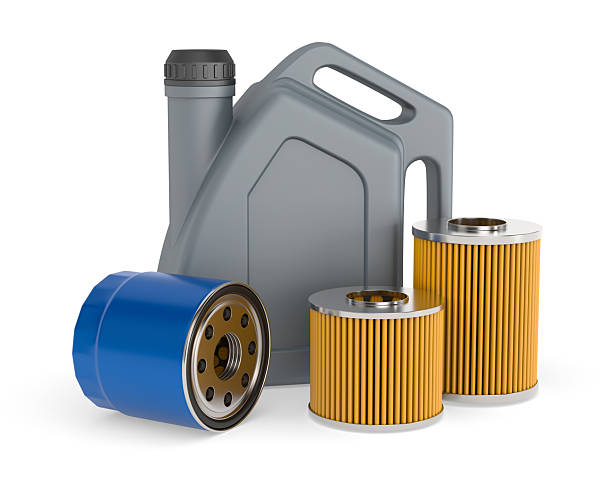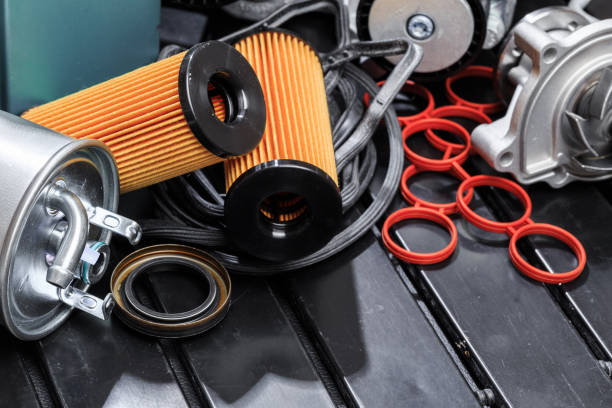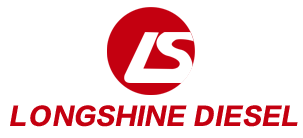What Is The Difference Between OEM And Aftermarket Cummins Filters?
During the maintenance of Cummins engines, you may notice an interesting phenomenon: almost every repairman, truck driver or equipment manager is discussing the same issue –
Is it worth buying OEM filters? Can Aftermarket filters be used as substitutes?This may seem simple, but it affects the engine’s lifespan, fuel consumption performance and maintenance costs. To help you understand it at once, we conduct a comprehensive comparison from multiple dimensions such as structure, performance, risk and price.
What Is The Difference Between OEM And Aftermarket Filters?
The OEM filters are produced by Cummins or its authorized suppliers, with strict standards and an extremely high degree of matching with the engine structure, oil circuit pressure and operating conditions. The secondary factory filters are independently developed by third parties. Although the models are the same, the design concepts and production requirements vary by brand.
This means:
The OEM focuses on conforming to the engine design logic, and every piece of data is based on and verified.
Aftermarket tends to focus on cost performance. To reduce costs, materials and processes may be simplified to varying degrees.
Some OEM products are of excellent quality and can meet the standards of the OEM or even exceed them. However, there are also some that are merely usable but it is difficult to achieve exactly the same performance.
In simple terms, the OEM is more stable and has lower risks. There are significant differences among sub-manufacturers, so it’s necessary to make a selection.

Are Aftermarket Air Filters As Good As OEM?
The air filter element may seem insignificant, but it has a significant impact on the engine. Because every tiny bit of dust, sand or impurity will cause wear and tear in the intake system, affecting the air volume measurement and thus the combustion efficiency.
Can Aftermarket air filters be used?
Sure, but it depends.
The main differences are reflected in the following aspects:
1. The filtration precision is different
The OEM air filters usually can stably filter fine particles and maintain the specified air flow rate.
Although aftermarket products can also filter, there are often no unified standards for their precision and stability. Some filter layers are relatively thin, and their efficiency drops more rapidly over time.
2. Whether the resistance control is reasonable
The smoothness of engine intake determines power and fuel consumption.
The original manufacturer strictly controls air resistance, while some aftermarket products may have higher or lower suction resistance due to different filter material densities or folding processes, which affects the acceleration response.
3. There is a significant difference in lifespan
The OEM service life can be replaced according to the recommended cycle by the manufacturer, while the service life of the aftermarket filter element is affected by the material, glue and folding method, and sometimes it needs to be replaced earlier.
If your vehicle works in an environment with a lot of dust and under heavy conditions, the risk of engine wear caused by long-term use of aftermarket air filters will increase.

Are Aftermarket Upper Fuel Filters Worth Choosing?
The fuel system is one of the most vulnerable and most in need of protection parts of a Cummins engine. Especially in high-pressure common rail systems, the precision of fuel injectors is extremely high. Even a little more impurities may cause false injection, blockage or even damage.
So when choosing a aftermarket upper fuel filter, the key lies in whether it can achieve:
- The filtration accuracy is high enough (clearly at the micron level)
- It has an effective ability to separate water
- It can maintain a reliable seal for a long time without leakage or air entry
- Whether the material is durable and whether the paper core is moisture-proof and deformation-proof
High-quality aftermarket products are theoretically available, but it is essential to confirm the data and source. If the source is unknown and there is a lack of a test report, it may pose a hidden danger for future maintenance costs.
How Do OEM Cummins Filters Compare To Aftermarket Filters In Terms Of Quality And Performance?

To make it clearer for you, we will explain from several key indicators.
1. Filtering capacity
The filtration efficiency of the OEM is usually stable and reliable, and all parameters have been repeatedly verified.
The filtering capacity of aftermarket factories depends on the brand and materials. Some can reach the standard of original factories, while others are slightly insufficient.
2. Materials and Processes
The OEM often uses high-density filter paper, high-quality rubber strips, and high-temperature resistant sealing materials.
Some aftermarket manufacturers, in order to cut costs, choose more economical materials, which leads to a decline in durability and stability.
3. Product consistency
The differences between batches of OEM Cummins filters are very small, maintaining stable performance.
Aftermarket products may have batch differences and may not be the same every time.
4. Lifespan performance
The OEM Cummins filter can basically reach or approach the nominal service life.
The lifespan of aftermarket filter elements is significantly affected by the material. Sometimes they may become saturated prematurely and require more frequent replacement.

Are There Any Risks Associated With Using Aftermarket Filters In Cummins Engines?
Aftermarket filters are not unusable. As long as they are properly selected, the risk can be reduced to an acceptable range. But objectively speaking, there are still some possibilities:
- Incomplete filtration leads to accelerated long-term wear and tear
- The problem with the sealing ring causes slight oil leakage or air entering the oil circuit
- Unstable resistance can affect power or fuel consumption
- The durability is insufficient and it needs to be replaced in advance
These risks do not occur in every OEM product, but the advantage of the OEM Cummins lies in its strong controllability and higher stability.
In simple terms: For high-intensity work, choosing the original manufacturer is more stable. For light users, it is advisable to consider high-quality brands from aftermarket manufacturers.
What Are The Cost Differences Between OEM And Aftermarket Cummins Filters?
There is usually a significant price difference between the OEM and the aftermarket:
The OEM Cummins price is relatively high, mostly 1.3 to 2 times that of the aftermarket factory
The prices of aftermarket products are more affordable, but the price differences among brands are also quite significant
This forms a choice logic:
- Choosing the OEM means choosing stability.
- Choosing a aftermarket manufacturer means prioritizing the budget, but it is necessary to select a reliable brand.
If problems such as engine wear, clogged fuel injectors, and damaged fuel pumps occur later on, the repair costs will be much higher than those of the filter element itself. Therefore, which type to choose requires a comprehensive judgment based on the usage scenario and budget.
Conclusion: How To Choose Depends On Your Needs
If you are in pursuit of a longer engine life and a lower failure rate, then the original Cummins filter is definitely the most reliable choice. If your vehicle is not used frequently or your overall budget is limited, then choosing a reputable aftermarket brand with a test report can also meet your normal needs.
The final judgment can be based on the following questions:
- Is your vehicle used frequently or lightly?
- Can one accept the potential risks in the later stage?
- Are there any strict requirements for engine performance?
- Can one distinguish high-quality aftermarket brands?
As long as you figure out these questions, you will be able to make the choice that suits you best.
Longshine is dedicated to supplying parts for Cummins worldwide. Please feel free to contact us!
